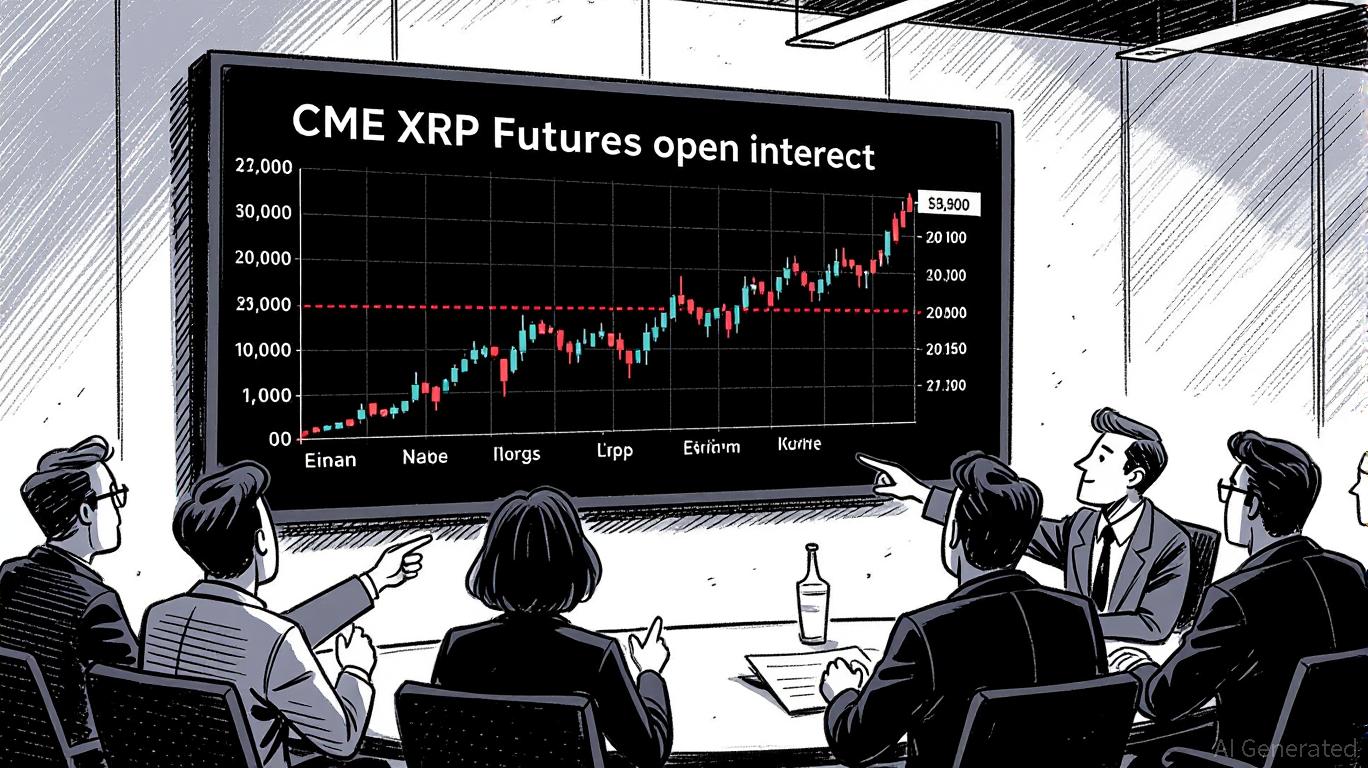CME XRP Futures: Ushering in a New Age of Institutional Acceptance for Cryptocurrency

When CME Group introduced XRP Futures in May 2025, it signaled a major transformation for the crypto sector. For a long time, XRP had been shrouded in legal uncertainty, primarily because of the SEC's prolonged lawsuit against Ripple. The dispute was finally settled in May 2025, with
Regulatory Certainty: Key to Institutional Growth
The repercussions of the SEC and Ripple coming to terms were swift. By August 2025, open interest in XRP Futures had soared to $1 billion in less than 100 days, setting a record for the fastest growth among all crypto derivatives on CME. This pace surpassed that of both
This regulatory transparency also sparked a surge in ETF filings. The ProShares Ultra XRP ETF (UXRP), for example, secured $1.2 billion in assets under management within its first month after launching in July 2025. With over 11 spot XRP ETFs in development, experts anticipate that total inflows could reach $4.3 to $8.4 billion by the end of the year. Institutional endorsement like this contrasts sharply with the speculative boom that previously dominated XRP's trading activity.
XRP’s Distinct Edge: Real-World Use and Speculation
XRP stands out from Bitcoin and Ethereum due to its dual-purpose nature. While Bitcoin serves primarily as a store of value and Ethereum as a platform for smart contracts, XRP specializes in streamlining cross-border payments. In the second quarter of 2025, Ripple's On-Demand Liquidity (ODL) processed $1.3 trillion in international transactions, with major banks such as
Additionally, the XRP Ledger (XRPL) holds $10 billion in total value locked (TVL), putting it on par with leading DeFi platforms. This combination of speculative potential and tangible utility makes XRP an appealing choice for institutional investors. Unlike Bitcoin, often viewed as a “digital gold” safe haven, XRP enables active income opportunities via staking and liquidity provision, making it especially valuable in environments where yields are low.
A Look at the Wider Crypto Market
Although Bitcoin and Ethereum remain dominant forces, the growth of their futures products has been more gradual. For instance, Ethereum futures reached $10.5 billion in open interest by the second quarter of 2025—a milestone reached over several years. In contrast, XRP’s rapid climb to $1 billion in open interest in under three months highlights its robust, institution-ready infrastructure and clear regulatory support.
Furthermore, XRP’s micro-futures contracts (2,500 XRP each) have broadened participation by welcoming retail traders, all while maintaining deep institutional liquidity. This broad appeal has increased market depth, with 7,533 contracts exchanged on a single high-volatility day in August 2025. Ample liquidity like this is essential for managing the price swings that often trouble crypto assets.
An Optimal Moment for Investors
For those looking for high-growth prospects in a regulated setting, XRP offers a strong opportunity. The Volatility Shares Trust XRP ETF (XRPI), which has accumulated $165.7 million in assets under management, exemplifies this trend. According to prediction markets, there is now an 87% chance that a U.S.-based spot XRP ETF will be approved before 2025 ends, mirroring the approval of Bitcoin ETFs the previous year. Such a move could bring in an extra $5 to $8 billion in capital, further cementing XRP’s place in institutional portfolios.
Nonetheless, challenges persist. While regulatory clarity provides support, XRP’s valuation remains sensitive to broad economic trends and investor sentiment. It is wise for investors to include XRP as a component of a well-diversified portfolio, weighing both its speculative upside and its foundational demand driven by utility.
Summary: Building Legitimacy for the Long Haul
CME XRP Futures are more than just another trading product—they represent a landmark step for regulatory acceptance and institutional participation. By adhering to CFTC guidelines, XRP has successfully crossed the divide between high-risk crypto markets and traditional finance. Its swift adoption, use in global payments, and expanding ETF presence make it a strategic pick for those looking to navigate the shifting crypto sector.
As financial systems worldwide move toward tokenization, XRP stands out for its clear regulatory status, growing institutional embrace, and practical utility. Investors hoping to benefit from the next wave of crypto innovation may find now is a timely moment to get involved.